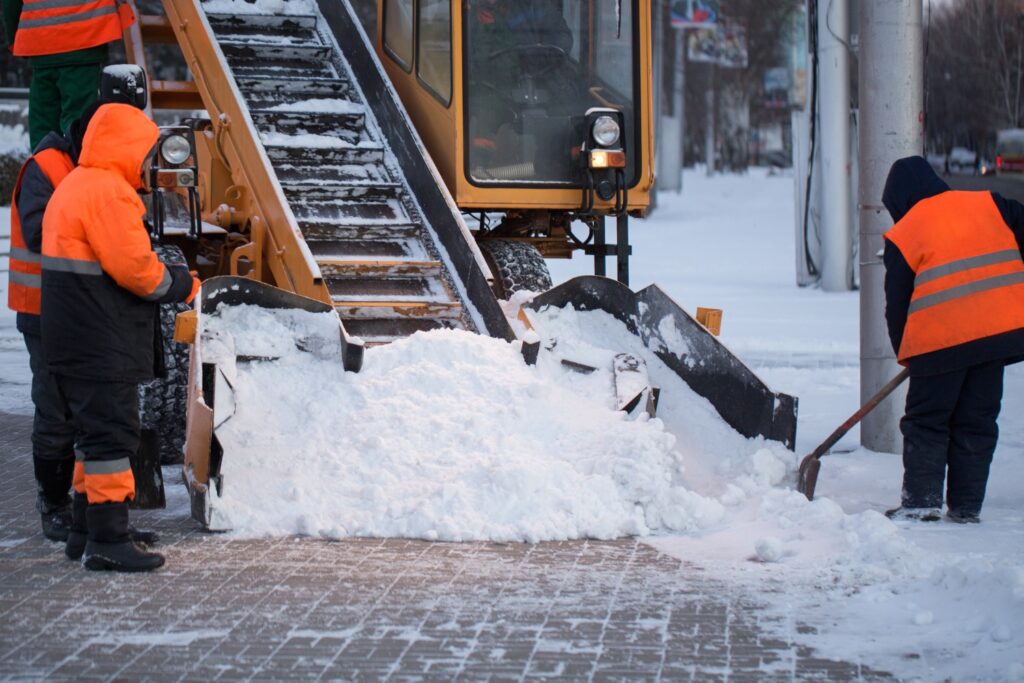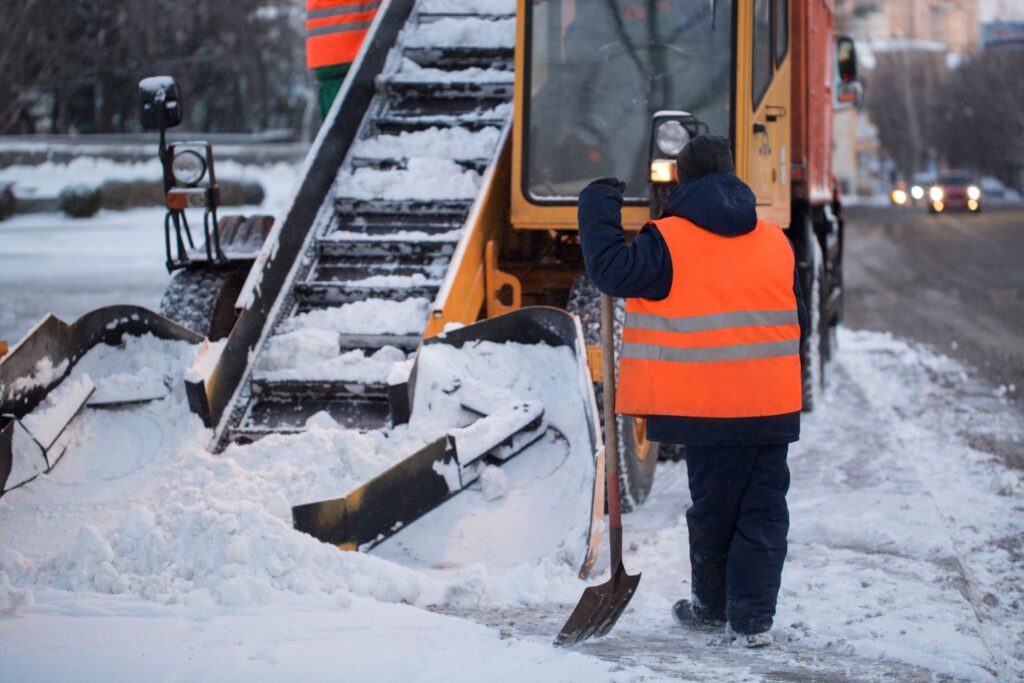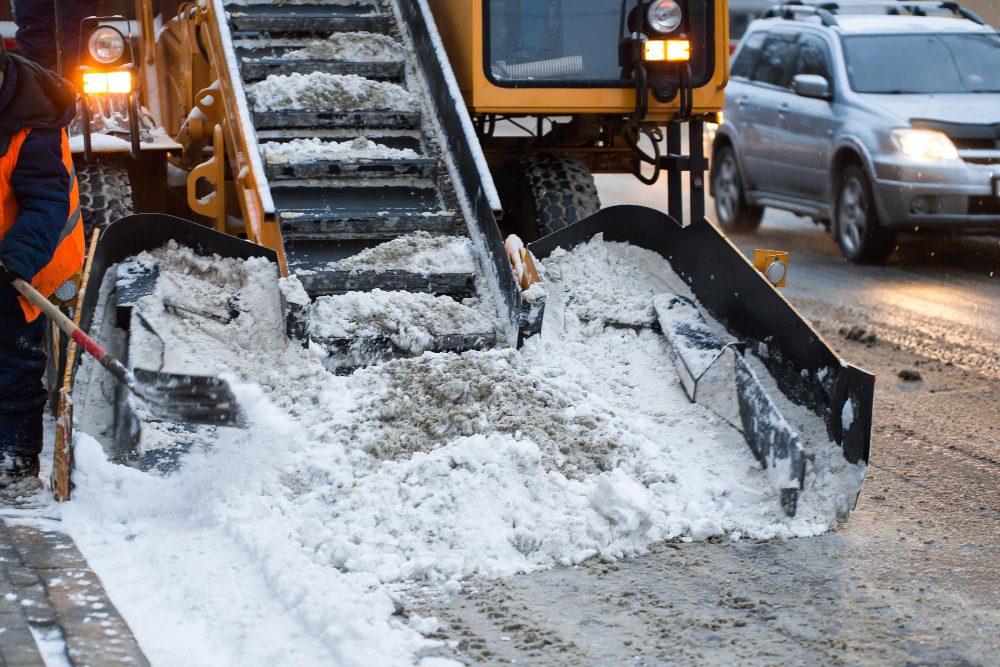Snow and ice management is a crucial aspect of property maintenance, especially during the winter months. It is essential for property owners and managers to understand the importance of effectively managing snow and ice to ensure the safety and accessibility of their properties. Failure to properly manage snow and ice can result in hazardous conditions, leading to slip and fall accidents, property damage, and potential legal liabilities. Additionally, snow and ice accumulation can obstruct walkways, driveways, and parking lots, making it difficult for tenants, customers, and employees to access the property. Therefore, it is imperative for property owners and managers to prioritize snow and ice management to maintain a safe and functional environment for all stakeholders.
Furthermore, effective snow and ice management can also help protect the structural integrity of buildings and infrastructure. The weight of snow and ice accumulation can put significant stress on roofs, gutters, and other building components, potentially leading to costly repairs or even structural damage. By implementing proper snow and ice management strategies, property owners and managers can mitigate these risks and ensure the longevity of their properties. Overall, understanding the importance of snow and ice management is essential for maintaining safe, accessible, and structurally sound properties during the winter months.
Key Takeaways
- Understanding the importance of snow and ice management is crucial for property owners and managers to ensure the safety and accessibility of their properties during winter months.
- Key factors to consider in snow and ice management planning include the size and layout of the property, local weather patterns, and the specific needs of the property’s occupants.
- Essential tools and equipment for effective snow and ice management include snow shovels, ice melt, snow blowers, and plows.
- Best practices for snow and ice removal and prevention include regular monitoring of weather conditions, prompt removal of snow and ice, and proactive application of ice melt.
- Hiring professional snow and ice management services can provide property owners and managers with the expertise and resources needed to effectively manage snow and ice on their properties.
Key Factors to Consider in Snow and Ice Management Planning
When it comes to snow and ice management planning, there are several key factors that property owners and managers must consider to effectively address winter weather challenges.
First and foremost, it is crucial to assess the specific needs and requirements of the property, taking into account factors such as size, layout, usage patterns, and local climate conditions.
This assessment will help determine the scope of snow and ice management efforts and inform the development of a comprehensive plan.
Additionally, property owners and managers must consider the potential risks and liabilities associated with snow and ice accumulation. This includes evaluating high-traffic areas, such as walkways, entrances, and parking lots, where slip and fall accidents are more likely to occur.
By identifying these areas of concern, property owners and managers can prioritize their snow and ice management efforts to minimize risks and ensure the safety of all individuals accessing the property. Furthermore, it is important to consider the environmental impact of snow and ice management practices, such as the use of de-icing chemicals and salt.
By taking these key factors into consideration, property owners and managers can develop a comprehensive snow and ice management plan that addresses the specific needs of their properties while minimizing risks and environmental impact.
Essential Tools and Equipment for Effective Snow and Ice Management
In order to effectively manage snow and ice on their properties, property owners and managers must have access to the essential tools and equipment necessary for winter weather maintenance.
This includes snow shovels, snow blowers, plows, salt spreaders, de-icing chemicals, and other specialized equipment designed to remove snow and ice from walkways, driveways, parking lots, and other areas of the property. Additionally, it is important to ensure that all equipment is properly maintained and in good working condition to ensure optimal performance when needed.
Furthermore, property owners and managers should consider investing in advanced technologies and equipment that can enhance their snow and ice management efforts. This may include automated snow removal systems, heated pavement systems, and other innovative solutions designed to improve efficiency and effectiveness.
By equipping themselves with the necessary tools and equipment for snow and ice management, property owners and managers can better prepare for winter weather challenges and maintain safe and accessible properties for their tenants, customers, and employees.

Best Practices for Snow and Ice Removal and Prevention
| Topic | Metrics |
|---|---|
| Snow and Ice Management | Essential Strategies |
| Property Owners | Best Practices |
| Managers | Key Considerations |
When it comes to snow and ice removal and prevention, there are several best practices that property owners and managers should follow to ensure effective winter weather maintenance. First and foremost, it is important to establish a proactive approach to snow and ice management by monitoring weather forecasts and preparing for potential snowfall or freezing conditions in advance. This may involve pre-treating surfaces with de-icing chemicals or salt to prevent snow and ice from bonding to pavement or other surfaces.
Additionally, property owners and managers should prioritize regular snow removal efforts to prevent excessive accumulation that can pose safety hazards.
This includes clearing walkways, entrances, parking lots, and other high-traffic areas as soon as possible after a snowfall. It is also important to properly dispose of removed snow to prevent re-accumulation in cleared areas.
Furthermore, property owners and managers should consider implementing sustainable snow removal practices, such as using environmentally friendly de-icing chemicals or salt alternatives to minimize environmental impact.
By following these best practices for snow and ice removal and prevention, property owners and managers can effectively manage winter weather challenges while minimizing risks and environmental impact.
Hiring Professional Snow and Ice Management Services
For property owners and managers who may not have the resources or expertise to effectively manage snow and ice on their properties, hiring professional snow and ice management services can be a valuable solution.
Professional snow removal companies have the experience, equipment, and resources necessary to efficiently address winter weather challenges while ensuring the safety and accessibility of properties. Additionally, hiring professional services can help alleviate the burden of snow and ice management for property owners and managers, allowing them to focus on other aspects of property maintenance.
When hiring professional snow and ice management services, it is important for property owners and managers to carefully evaluate potential service providers to ensure they have the expertise and capabilities needed to meet their specific needs.
This may include conducting thorough research, obtaining references or recommendations from other property owners or managers, and requesting detailed proposals from prospective service providers.
By partnering with reputable professional snow removal companies, property owners and managers can benefit from reliable, efficient, and effective snow and ice management services that help maintain safe and accessible properties during the winter months.
Creating a Snow and Ice Management Plan for Your Property
Developing a comprehensive snow and ice management plan is essential for property owners and managers to effectively address winter weather challenges on their properties.
A well-designed plan should outline specific strategies for snow removal, de-icing, prevention, equipment maintenance, monitoring procedures, communication protocols, budgeting considerations, environmental impact mitigation, as well as contingency plans for extreme weather events. By creating a detailed plan tailored to the unique needs of their properties, property owners and managers can better prepare for winter weather challenges while minimizing risks.
Furthermore, it is important for property owners and managers to involve all relevant stakeholders in the development of the snow and ice management plan. This may include tenants, employees, maintenance staff, contractors, or other individuals who may be impacted by winter weather conditions on the property.
By soliciting input from these stakeholders, property owners and managers can gain valuable insights that can help inform the development of a more comprehensive plan that addresses the specific needs of all individuals accessing the property during the winter months.
Overall, creating a snow and ice management plan is a critical step for property owners and managers to effectively address winter weather challenges while maintaining safe, accessible properties for all stakeholders.

Tips for Maintaining Safe and Accessible Properties During Winter Months
In addition to implementing effective snow and ice management strategies, there are several tips that property owners and managers can follow to maintain safe and accessible properties during the winter months.
First and foremost, it is important to communicate with tenants, customers, employees, or other individuals accessing the property about winter weather conditions, potential hazards, safety protocols, as well as any temporary closures or restrictions that may be in place due to snow or ice accumulation.
Furthermore, property owners and managers should consider providing adequate lighting in outdoor areas to improve visibility during dark or snowy conditions. This can help prevent slip and fall accidents by making it easier for individuals to navigate walkways or parking lots safely.
Additionally, it is important to regularly inspect the property for potential hazards caused by snow or ice accumulation, such as roof leaks or structural damage due to excessive weight. By proactively addressing these issues, property owners and managers can minimize risks while maintaining safe and accessible properties for all stakeholders during the winter months.
In conclusion, effective snow and ice management is essential for property owners and managers to maintain safe, accessible, and structurally sound properties during the winter months.
By understanding the importance of snow and ice management, considering key factors in planning efforts, equipping themselves with essential tools and equipment, following best practices for removal and prevention, considering professional services when needed, creating comprehensive management plans tailored to their properties’ needs as well as following tips for maintaining safe properties during winter months; property owners can effectively address winter weather challenges while ensuring the safety of all individuals accessing their properties. Overall; prioritizing snow & ice management is crucial for maintaining a safe environment during winter months.




